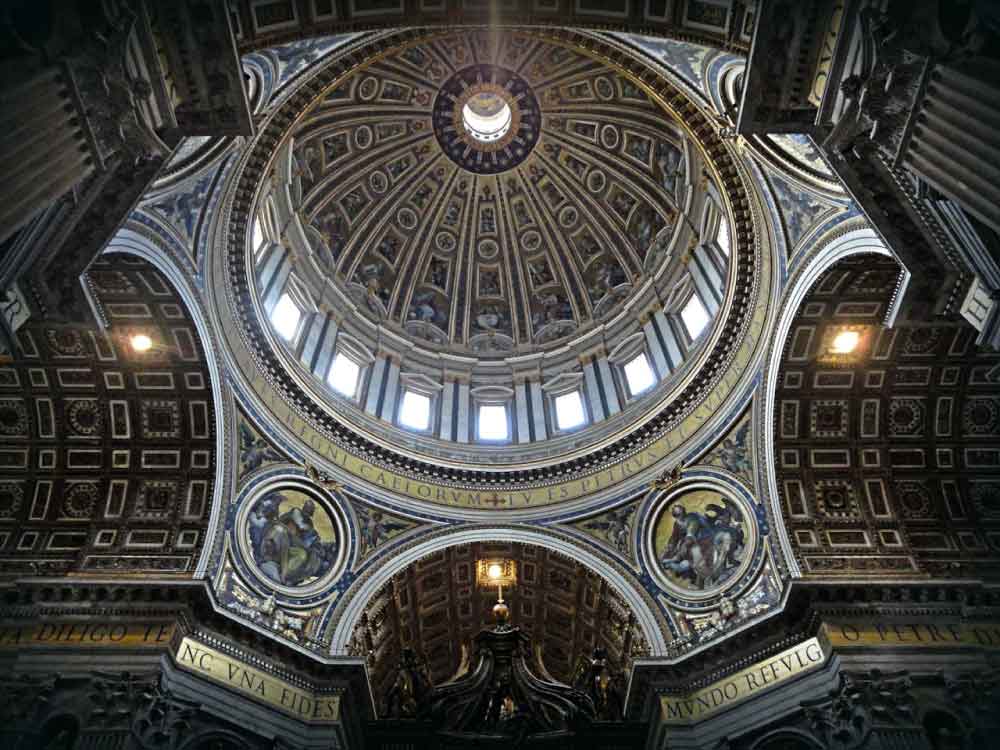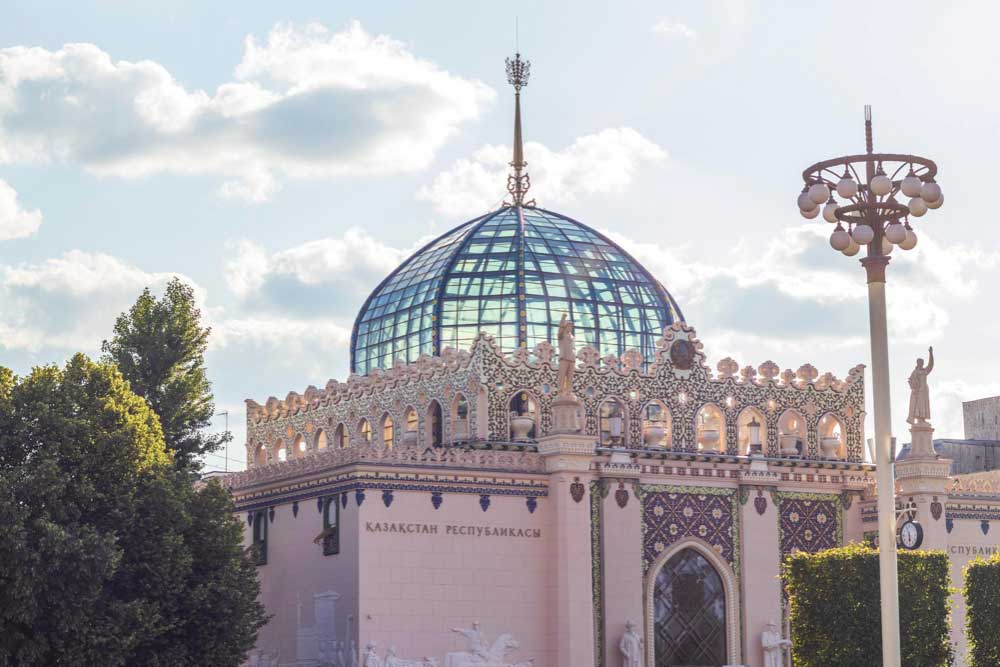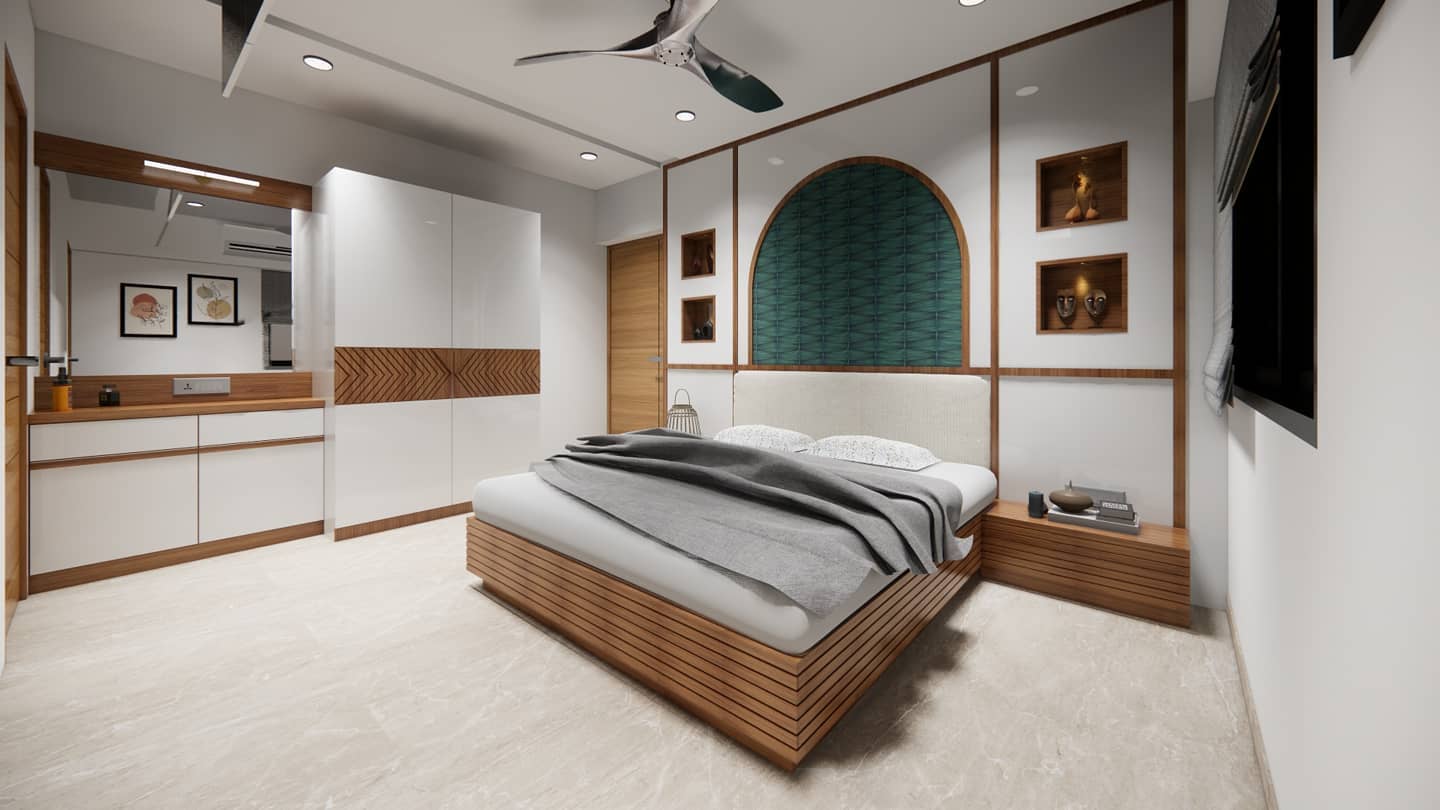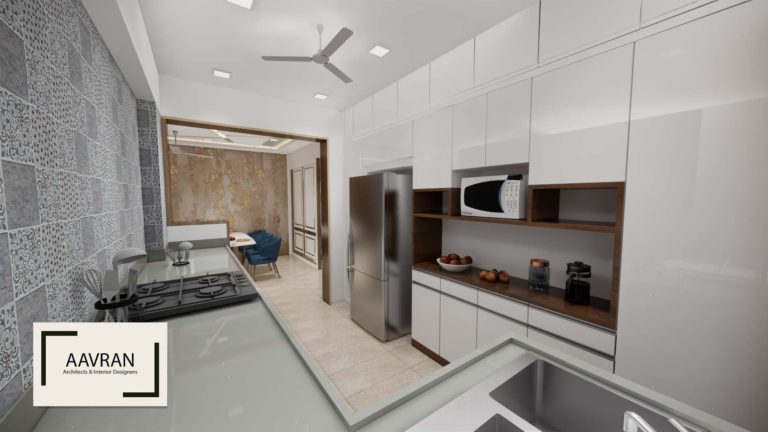
Table of Contents
A dome in a building is a curved structural element that spans a space to form the uppermost part of the structure. Typically spherical or hemispherical, a series of arches or pillars supports the dome and covers a large, open space. They offer both structural stability and aesthetic appeal. Religious and government buildings, along with other important structures, commonly feature domes that exude a sense of grandeur and elegance. They appear in various architectural styles, including classical, Gothic, and modern. According to The Editors of Encyclopaedia Britannica, domes can be made from a range of materials such as concrete, stone, brick and steel.
Now, let’s dig deeper into the types of dome architecture and understand its origin. Around 100 A.D., Roman architects learnt that by rotating an arch in a circle, they could produce a sturdy three-dimensional object called a monolithic dome.
This technique gradually gained popularity around the world due to its many advantages. One such advantage is that different types of domes gain weight proportionally to their height because of their geometry.
Historical examples include a parabolic dome-shaped building constructed by the Thule people of the Canadian Arctic around 1300 AD using whalebone frames. Another is the igloo or snow lodge, constructed by the Inuit and Eskimo peoples of the Arctic.
Additionally, Byzantine architects were the first to adopt a method of placing domes on piers, allowing for access and lighting from all cardinal directions. They transformed the dome from its original cube shape to a hemisphere. This was possible using four pendentives—masonry structures shaped like inverted triangles. Europe revived domes in buildings throughout the Renaissance and Baroque eras.

Why is the Dome Important?

From early ages, domes covered temples, churches, and other important buildings to symbolise grandeur and majesty. In modern times, domes are still used in various settings, including public buildings, museums, and sporting venues, where they can provide a sense of grandeur and create a spacious, open feeling. Several types of dome architecture offer an array of benefits. Let’s have a look at them.
* A dome in a building is a curved-shaped element that distributes weight evenly, reducing stress on any single point.
* Domes are naturally resistant to high winds, earthquakes and other natural phenomena due to their self-supporting shape.
* Domes span over wide areas without columns, allowing for open, uninterrupted spaces.
*They are visually striking, evoking feelings of power, majesty and grandeur. They are timeless and iconic.
* The shape of a dome helps minimise heat gain and loss, promoting natural air circulation and temperature control.
*The curvature of a dome building enhances sound projection, making it ideal for religious spaces, concert halls and theatres.
* Durable with minimal maintenance, every type of dome requires fewer building materials compared to traditional roofs.
Characteristics of Types of Dome

Some of the characteristics that all types of domes possess are:
1. Curved or Spherical Surface: Every type of dome has a convex shape resembling part of a sphere, an ellipse or a parabloid.
2. Centralised Geometry: Domes in buildings often rise above a circular, square or polygonal base, creating a strong central focus.
3. Equal Load Distribution: The curvature allows for even weight distribution, contributing to the dome’s strength while reducing the need for internal columns.
4. Variety of Forms: There are several types of domes, each with distinct forms and construction methods.
5. Architectural Innovations: Domes have pushed the boundaries of architectural and engineering techniques historically.
6. Openness and Spaciousness: Since domes require no internal support, they allow for flexible and open layouts. In other words, domes give room for utilising the available space creatively and efficiently.
Flexible: If one studies types of dome architecture, it is evident that they are flexible due to the absence of interior support. They can be made from a variety of materials, such as stones, bricks, concrete, metal, glass and even fabric.
Also read: Unique ways to Design Architecture for the Millennials
Types Of Domes
Ar. Ishita Jindal, in her article on different types of domes, has provided an exhaustive list. Here are a few:

Some of the different types of domes are-
1. Beehive Dome

Courtesy - theconstructor
This oldest style of dome, one of the most mesmerising types of dome architecture, dates back to Palaeolithic times. Technically, these structures are not true domes, as they are made of horizontal masonry layers that bulge slightly outward from the center before converging. When viewed from the outside, each successive layer appears cantilevered or corbelled toward the center until they finally meet at the top. Beehive dwellings, like those found in Harran, southern Turkey, are a notable example of this style.
2. Geodesic Dome

Courtesy - designingbuildings
A geodesic dome is a spherical structure formed by a latticework of triangles. Buckminster Fuller, an American architect and engineer, created them in the 1940s. These triangles, along with a few other simple components, form the basis of the dome’s self-balancing structural system. These structures are essentially variations of polyhedra, such as icosahedrons, octahedrons, and tetrahedrons, and even cubes. To effectively resolve a dome’s internal tensions, these domes can be built using a small number of simple parts and joints. ‘Abraham, R & Chandran, G.’ have suggested that geodesic domes are a suitable option for housing.
Although primarily used for entertainment, their applications are limitless. Inside the dome-shaped structure, people often feel as though they have been transported to another world, thanks to the wide-angle projections that cover every inch of the interior. With a 360-degree dome, you can visit your favorite beach or take a stroll through a forest without ever leaving your house, as it captures and displays immersive, panoramic surroundings.
3. Onion Dome

Courtesy - theconstructor
An onion dome is a type of dome commonly found in Russian and Eastern Orthodox architecture. It is named for its distinct shape, which resembles an onion. These domes are characterised by a bulge larger than their base diameters and a gradual taper into an ogee (S-curve) form. They are often gilded or painted in vivid colours, and their height typically exceeds their width.
Onion domes are typically large and rounded, often featuring several decorative elements, such as bands of ornamentation or intricate patterns. They are typically placed at the top of a structure, such as a church or a palace, and are often adorned with gold or colourful finishes. The Russian Orthodox Church and Catholic Churches in Bavaria, Germany, India, the Middle East, and Central Asia all make use of these bulbous sconces.
Modern onion domes are often constructed using glass-fiber-reinforced concrete, which ensures long-lasting durability. Concrete dome buildings are known for their durability, energy efficiency, resilience and structural strength, making them a popular choice for modern architecture and sustainable construction.
4. Inflatable Dome

Courtesy - theconstructor
An inflatable dome is a structure made of a flexible material, such as PVC or nylon, which can be inflated with air to create a large, rounded shape. Often used as temporary or portable structures for multiple purposes, including events, sports, and exhibitions, these domes are relatively quick and easy to set up and transport from one location to another. Inflatable domes can also be used as permanent structures, especially for sports training or recreational purposes. Some inflatable domes are designed to function as temporary shelters in emergencies, such as during natural disasters. They are often chosen for their versatility, cost-effectiveness, and ease of use. Due to their ability to create the illusion of infinite space, inflatable domes are ideal for use as projection domes. Inside the dome, a membrane-like fabric can be installed to display high-resolution images. The use of projection mapping in these immersive settings transforms the space into a social hub that transports attendees to another dimension.
5. Compound Dome

A compound dome is a type of dome composed of two or more smaller domes joined together. This type of dome is often used in large structures, such as public buildings, where a single dome may not be sufficient to cover the entire space. Compound domes can take on a variety of shapes and configurations, depending on the building’s specific design and purpose. For example, a compound dome may consist of a central dome surrounded by smaller domes or a series of interconnected domes of different sizes. Compound domes not only provide additional support and stability but also enhance the aesthetic appeal of the building by contributing to a more ornate or decorative design.
6. Hemispherical Dome

Courtesy - theconstructor
A hemispherical dome is a type of dome shaped like a half sphere. It is a symmetrical, rounded structure typically used as a roof or ceiling for a building or other type of structure because of its structural properties. Hemispherical domes can be made from various materials, including concrete, steel, and wood, and are commonly found in a wide range of structures, including museums and theaters.
7. Monolithic Dome

Courtesy - theconstructor
Monolithic domes are remarkable structures used worldwide, from cold Arctic regions to tropical areas, for schools, homes, churches, gymnasiums, and storage facilities. They combine strength, energy efficiency, and design flexibility. Ranging in size from compact 8-foot domes to expansive 340-foot structures and beyond, they can be engineered to withstand harsh conditions, including major earthquakes, hurricanes, fires, and explosions, often at a lower cost than conventional buildings.
Built using a single, continuous pour of concrete over a rebar frame and insulation, the concrete is sprayed on with high-pressure hoses, forming a seamless, self-supporting shell. A protective outer coating enhances durability and weather resistance along with energy efficiency.
Monolithic domes maintain comfortable interior temperatures year-round while reducing energy use by 50 per cent compared to traditional buildings. Their open, column-free interiors offer extensive design flexibility and require minimal maintenance over time. The igloo is the earliest example of a monolithic-style structure, while Provo, Utah, is home to the world’s first modern monolithic dome building.
8. Oval Dome

An oval dome is an oval or egg-shaped structure, which is symmetrical and rounded, typically used as a roof or ceiling for a building or other type of structure. The curved shape of the dome distributes weight evenly and provides additional stability to the structure. There must be at least four centers and two axes of symmetry. Originating in Asia Minor, this architectural pattern has since spread across the globe.
9. Umbrella Dome

Courtesy - theconstructor
An umbrella dome is a type of architectural structure that resembles an umbrella and is used to cover an open space. It typically consists of a central support column or pole and a series of radiating ribs that support a curved canopy made of a waterproof and UV-resistant material, such as fabric or plastic. The design intends to protect the area underneath from rain, sun, and other elements. Umbrella domes are often used to provide shade and shelter in outdoor spaces, such as parks, playgrounds, and recreational areas; to cover outdoor seating areas at restaurants and cafes; or to provide shade for other public spaces.
To explore more about different types of domes and their architectural significance, check out this comprehensive guide on dome structures here
Other Applications of Dome

Some of the applications of domes are-
- Stadiums and Arenas: Domed stadiums and arenas are popular because they can protect spectators and athletes from the elements while still allowing natural light to enter the structure.
- Greenhouses: Domed greenhouses grow plants and flowers in a controlled environment. The dome shape allows maximum light exposure, supporting heating and cooling to maintain the optimal temperature for plant growth.
- Observatories: Dome-shaped observatories house telescopes and other scientific instruments for studying the stars and other celestial bodies.
- Swimming pools: Some swimming pools are built with a dome-shaped cover to enclose the pool and keep it warm during colder months.
- Military fortifications: Domed structures have been used as military fortifications throughout history due to their strength and ability to deflect projectiles.
Arches have made a strong comeback in modern interior design, blending functionality with aesthetic appeal. From doorways to decorative niches, they add elegance and a sense of continuity to spaces. Learn more about the latest trends in arches for interior design and how they can transform your home.
Famous Structures with Domes
Here are some famous structures with domes:
1. The Pantheon in Rome, Italy

The Pantheon is a temple dedicated to ancient Rome, and it features a massive dome with a diameter of 142 feet (43 meters). The dome is made of concrete and has an opening at the top, called an oculus, which allows light to enter the structure.
2. The Taj Mahal in Agra, India

One of the most beautiful buildings in the word, the Taj Mahal, which is a white marble mausoleum, has a large central dome that is surrounded by four smaller domes.
3. The United States Capitol in Washington, D.C.

The United States Capitol is the seat of the United States Congress and features a large dome that sits atop the building. The dome is made of cast iron and is painted white.
4. The Saint Isaac’s Cathedral in Saint Petersburg, Russia

The Saint Isaac’s Cathedral is a Russian Orthodox cathedral that features a massive dome gilded in gold leaf. The dome is supported by four massive pillars and has a diameter of 101 feet (31 meters).
5. The Hagia Sophia in Istanbul, Turkey

The Hagia Sophia is a former cathedral and mosque that was later converted into a museum in modern times. However, in 2020, it was reconverted into a mosque. It features a large central dome supported by four smaller domes and has a diameter of 107 feet (32.5 meters). The dome is decorated with beautiful mosaics and includes an oculus at the top to allow natural light into the structure.
Conclusion
In conclusion, domes are popular architectural elements used across various applications, including buildings, arenas, greenhouses, observatories, swimming pools, and military fortifications. They are often chosen for their aesthetic appeal, ability to create large, open interior spaces, and strength. Dome projection can create an immersive virtual reality experience.
Also read: Glance Over Architectural Styles through the Ages
Author Bio
Nafisa Nazneen Choudhury – Nafisa Nazneen Choudhury is a Civil Engineer (completed B.E. from Assam Engineering College) and is currently pursuing M.Tech in Structural Engineering at National Institute of Technology, Silchar. She is a Technical Content Writer, having over 3 years of experience and has wrote many articles related to Civil Engineering. She is also a Book Author (Authored – “Dream Tales of NNC: Revenge By Murder”) and her book can be found on Amazon. She is also a Guest Author at Gharpedia. Moreover, she is a certified member at Institution of Civil Engineers (ICE) and National Society of Professional Engineers (NSPE). She writes her blogs at her website – nnc2017.wordpress.com. She can be reached on LinkedIn.
References
The Editors of Encyclopaedia Britannica (1998a) Dome | history, construction, design. Available at https://www.britannica.com/technology/dome-architecture.
Jindal, A. (2023) 10 types of domes – Exploring architectural elegance. Available at https://thearchitectsdiary.com/10-types-of-domes-exploring-architectural-elegance/.
Abraham, R & Chandran, G. (2016). Study of Dome structures with specific Focus on Monolithic and Geodesic Domes for Housing. Available at https:/www.researchgate.net publication/349138511_Study_of_Dome_structures_with_specific_Focus_on_Monolithic_and_Geodesic_Domes_for_Housing






























